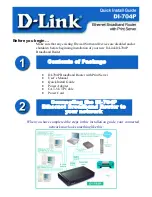
The SnapGear appliance can utilize IP
Masquerading
(a simple form of Network
Address Translation, or NAT) where users on the local network effectively share a single
external IP address. Masquerading allows insiders to get out, without allowing outsiders
in. By default, the Internet interface is setup to Masquerade.
Masquerading has the following advantages:
•
Added security because machines outside the local network only know the
gateway address.
•
All machines on the local network can access the Internet using a single ISP
account.
•
Only one public IP address is used and is shared by all machines on the local
network. Each machine has its own private IP address.
SnapGear recommends setting
Masquerade
on the Internet interface.
Internet Interface Aliases
allows the SnapGear appliance to respond to multiple IP
addresses on the Internet interface. You must also setup appropriate
Incoming Access
rules to allow traffic sent to the additional (i.e. aliased) IP addresses to be passed to the
local network.
On rare occasions it may be necessary to change the Ethernet hardware or
MAC
Address
of your SnapGear appliance. The MAC address is a globally unique address
and is specific to a single SnapGear appliance. It is set by the manufacturer and should
not normally be changed. However, you may need to change it if your ISP has configured
your ADSL or cable modem to only communicate with a device with a known MAC
address.
Network configuration
54
Содержание VPN appliance Family 1.7.8
Страница 11: ...Figure 1 3 Network interconnections Introduction 8...
Страница 70: ...Firewall 67 Figure 6 7 Content filtering...
















































